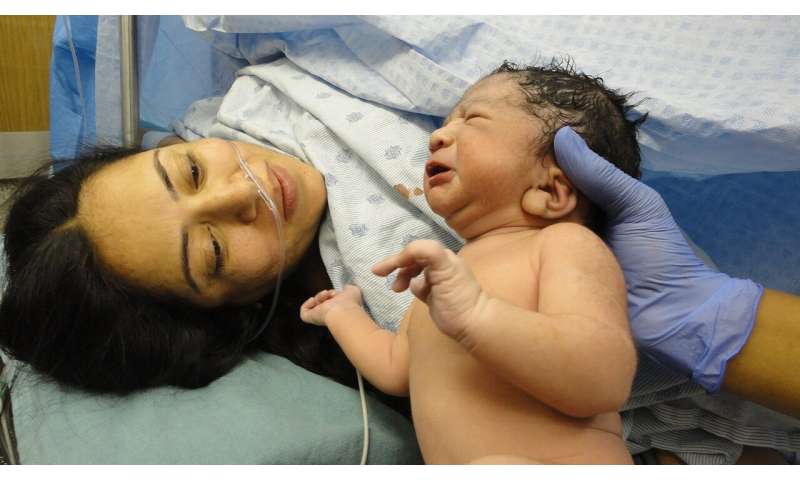
Water, medication, music—pregnant women use a wide range of methods to manage pain while giving birth.
And now Victoria University of Wellington Ph.D. student Lorna Massov, from the School of Nursing, Midwifery, and Health Practice, is researching another potential method of pain management: virtual reality technology.
A qualified and experienced midwife, Massov wanted to undertake a research project that could help pregnant women in a practical way and extend midwifery practice.
“In my experience, many women want a natural, drug-free birth without an epidural,” she says.
“There are many other methods used to help with drug-free labor, and I thought virtual reality would fit in well with this suite of techniques as it has previously been used for pain management in other areas.
“Labour can be long, and you can get tired of using the same pain management techniques. Visualisation is a very powerful tool that can take patients to their ‘happy place’ and help them relax and manage their pain.”
Massov wanted to answer two questions with her research: would women be willing to use virtual reality during labor to help manage their pain, and would virtual reality help them manage their pain and feel in control of the labor process?
https://youtube.com/watch?v=8hVjg-DLNrs%3Fcolor%3Dwhite
She recruited a group of pregnant women to take part in her study and asked them to view four virtual reality scenes using a VR head-set. This process was designed to prepare the women for the experience of using virtual reality and make sure they would be comfortable wearing the headset.
Each participant wore the headset for two 10-minute intervals during the early and active stages of their labor. While they wore the headset, Massov asked them to assess their level of pain, and then measured their pulse and blood pressure—two good indicators of stress on the body. The women could also use the headset at other points during labor if they wished.
Finally, Massov interviewed each of the women after they had given birth and returned home, asking them if virtual reality helped them manage their pain, relax, and feel in control, and if they would use it again or recommend it to a friend.
“Many respondents have said virtual reality helped them have a positive birth experience, and most respondents so far have said they would both use it again and recommend it to pregnant friends,” she says.
“Interestingly, most women said, rather than reducing their pain, the use of virtual reality helped them spend less time thinking about their pain and helped them manage their pain.”
Overall, says Massov, nature or underwater scenes were most popular, especially when women could relate the scene to a happy memory such as a tropical holiday. However, women generally found commercially available virtual reality scenes too short.
Source: Read Full Article





